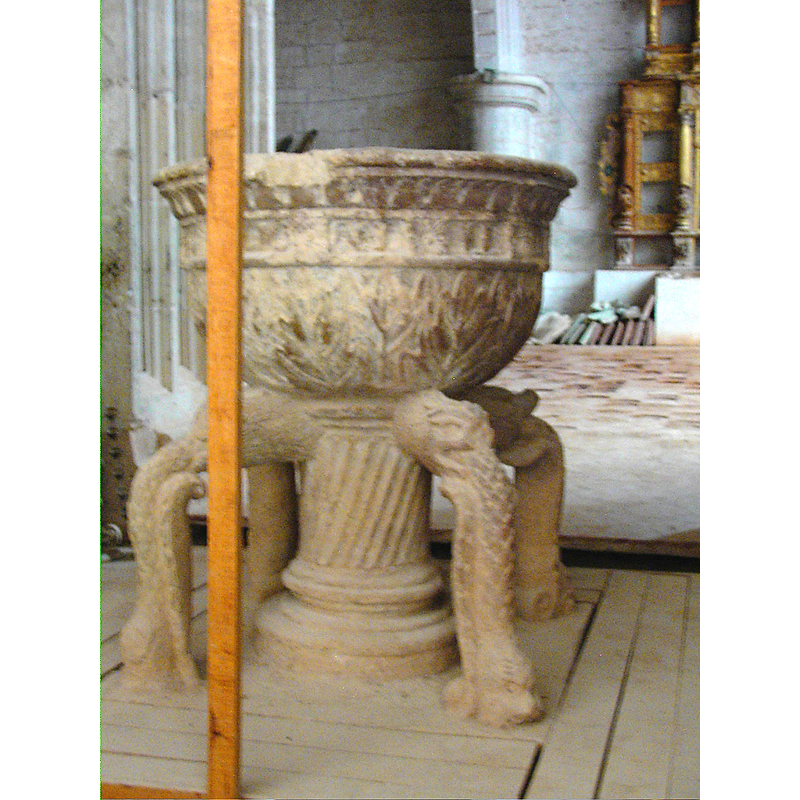Yanhuitlan

Image copyright © Mónica Domínguez Torres, 2006
Standing permission
Results: 12 records
B01: design element - motifs - foliage
BBU01: design element - patterns - leafy
BU02: design element - motifs - moulding
LB01: design element - motifs - moulding
LB02: design element - patterns - torsade
LB03: design element - motifs - moulding
LB04: animal - fabulous animal or monster - devouring prey - 4
R01: design element - motifs - moulding
view of base - detail
view of basin
view of font
INFORMATION
FontID: 11903YAN
Object Type: Baptismal Font1
Church/Chapel: Templo y ex-Convento de Santo Domingo
Country Name: Mexico
Location: Oaxaca
Font Location in Church: Inside the church
Date: ca. 1590?
Century and Period: 16th century(late), Tequitqui
Font Notes:
Click to view
Illustrated in Gorbea Trueba (1962). Probably the most original baptismal font of the early colonial period in Mexico, its rarety being related to the shape of the base, a variation of the classical five-support so common on many early fonts; the central shaft is roughly cylindrical, with torsade pattern covering the sides between the round mouldings at top and bottom; the variance is in the outer colonnettes which, in this case take the shape of four semi-arches set at 90-degree angles, and consisting of monstruous heads at the top devouring reptile tubular bodies that make the stems and bases of the colonnettes; the contrast between the classical Western European element of the central shaft with the life-like dynamism of the outer colonnettes is very striking; the basin itself is hemispherical to the upper basin levbel where it splays outwards; the sides are decorated with foliage on the underbowl and lower sides up to a thin moulding, then a narrow band of the same foliage pattern to the next moulding, and lastly another narrow band of leafy pattern of a different shape to the upper rim moulding; there is damage to one of the sides of the upper rim [related perhaps to the anchoring hardware of the cover?]. [We are grateful to professor Mónica Domínguez, of the Dept. of Art History, University of Delaware, for her images of this font]
MEDIUM AND MEASUREMENTS
Material: stone
Font Shape: hemispheric (mounted)
Basin Interior Shape: round
Basin Exterior Shape: round
REFERENCES
Christian, John T., Baptist history vindicated, 1899
